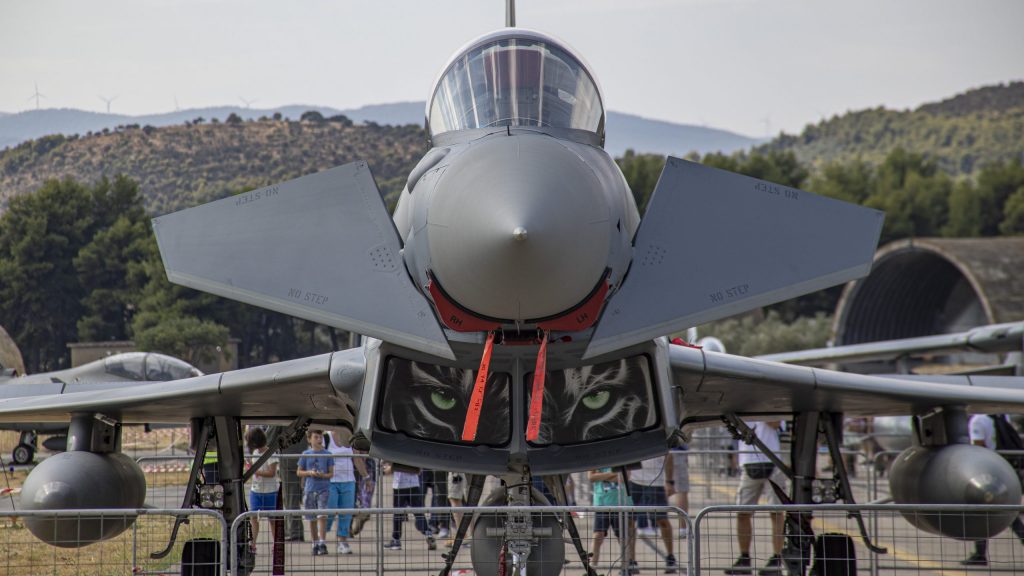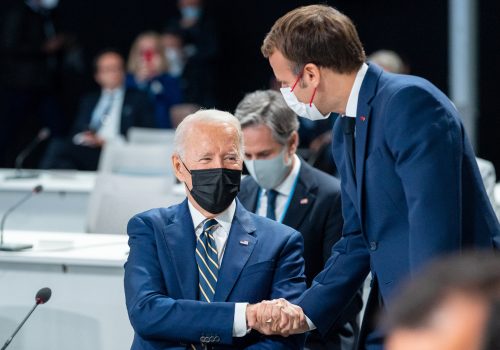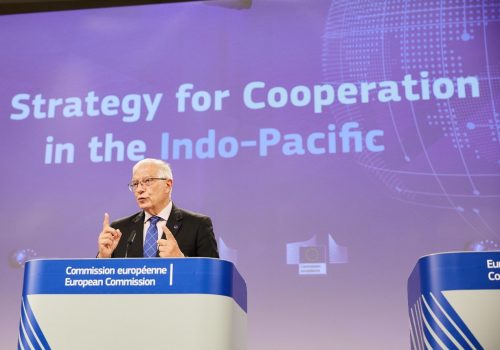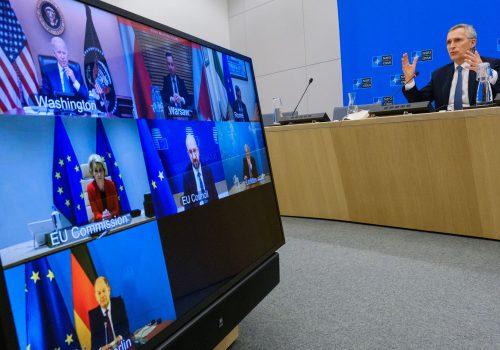For the next six months, France holds the presidency of the Council of the European Union (EU). Its overall goal, according to President Emmanuel Macron, is “to move from being a Europe of cooperation inside of our borders to a powerful Europe in the world, fully sovereign, free to make its choices and master of its destiny.” Applied to the field of defense, it means “learning the language of power,” according to EU foreign policy chief Josep Borrell, and being willing to act more rigorously to defend its interests wherever they are threatened.
Paris is now determined to translate intent into actions and make European defense more operational. That’s why the bloc’s Strategic Compass—its very first white paper on defense—will be a key deliverable of the French presidency. Some might argue that the only way EU leaders can talk about taking action is by publishing a new paper. But the Strategic Compass will offer firm commitments, not just promises.
The document will lay out a common strategic vision for EU security and defense, as well as set up achievable and practical objectives along a timeline. With mechanisms to measure progress, such as an annual progress report by the European Council, it will amount to a real road map. There will be strong incentives to follow up on the commitments included, as the document will be endorsed by the heads of state and government and will leave room for potential revisions. The Strategic Compass will be a barometer for both member states’ and the bloc’s ambitions to make the EU a leading security provider for its citizens.
With this objective in mind, the EU first needs to assess its specific strategic environment and priorities. For example, despite recent progress in various European defense initiatives, there’s still no common understanding of the threats and challenges facing the EU as a single entity. But the Strategic Compass will begin to address this: For the very first time, and at the highest level, Europeans will collectively release a joint threat assessment (the first EU Threat Analysis was classified and never endorsed by the member states’ leaders). This high-level endorsement is critical because it signals a level of political unity that has so far been largely absent.
As tensions over Ukraine reach a boiling point, the ongoing dialogue between European capitals and Brussels on this topic should lead to a shared understanding of what Russian behavior and ambitions, for example, mean for European security. That doesn’t imply alignment on everything—but it’s key to identifying the way forward in addressing the challenges posed by Russia, some of which (such as disinformation) are better addressed within the EU. Because the bloc has limited assets to address a very large range of difficulties (some are better left for NATO to deal with), the Strategic Compass should avoid giving blurry guidelines by clearly ranking the challenges and threats—something the EU’s first threat analysis failed to achieve.
Second, based on this threat analysis, the Strategic Compass should offer an action plan that is both ambitious and achievable. It would set up targets in key areas, focusing particularly on the ability to act, to invest, to secure, and to partner. For instance, the EU and its member states currently lack critical strategic enablers for various operations—which is why the United States provides key intelligence, surveillance, and reconnaissance support to the French-led Operation Barkhane in the Sahel, and why the Europeans were unable to continue evacuations from Kabul last August without US support. The Strategic Compass should lay out capabilities worthy of investment, such as force protection or surveillance and reconnaissance capabilities.
The Strategic Compass will also reinforce EU space policy with a specific defense and security strategy, expected by the end of next year. Many other objectives are also currently being prepared, with target dates to achieve them. Those includes securing EU access to increasingly contested domains like cyberspace, outer space, and the seas; reducing strategic dependencies; streamlining decision making; and improving the mandates for European operations and missions to be led more efficiently.
The EU also needs to build and strengthen reliable partnerships. Potentially following a new EU-NATO joint statement on cooperation, the Strategic Compass should demonstrate that strategic autonomy goes hand-in-hand with strengthening cooperation with partners. In that regard, both NATO’s Strategic Concept and the EU’s Strategic Compass are the respective institutional instruments that define ambitions for renewed NATO-EU cooperation. Discrepancies between the two would be detrimental to their collective credibility. The Strategic Compass can confirm the EU’s will to foster cooperation in defense with the United States where necessary—demonstrating that making Europe stronger does not weaken transatlantic ties. That’s why the first strategic dialogue on security and defense between the EU and the United States should take place in the next few months.
The elements for an ambitious Strategic Compass are all lined up: the evolution of the international strategic environment, US recognition of “the importance of a stronger and more capable European defense,” and the timing of the French presidency of the EU Council. This unprecedented exercise can pave the way for a stronger Europe, and failing to successfully fulfill the Compass and its ambitions means the EU will remain merely a junior partner—rather than the key player the United States actually needs in this time of strategic competition.
Marie Jourdain is a visiting fellow at the Atlantic Council’s Europe Center and a formerly worked for the French Ministry of Defense’s Directorate General for International Relations and Strategy.
Further reading
Fri, Nov 19, 2021
Climate security can help bring the US and France together once again
New Atlanticist By Marie Jourdain
After strained ties caused by AUKUS, how should the United States and France repair their bilateral relationship? By spearheading climate security.
Fri, Dec 17, 2021
The EU as a global actor in the Indo-Pacific
Issue Brief By Marie Jourdain
The coming French presidency of the Council of the European Union in the first semester of 2022 presents a great opportunity to turn commitments to deepen such cooperation into action, demonstrating that the transatlantic community can effectively deliver together in the Indo-Pacific region.
Fri, Jan 28, 2022
Experts react: The view from European capitals as consensus emerges against Russia
Experts react By
Which EU member states will rise to the challenge from Russia? The Atlantic Council's Europe Center experts weigh in with views from across the continent.
Image: A German Air Force Eurofighter Typhoon EF2000 is seen on display during Athens Flying Week 2021 at Tanagra Air Base. Photo by Nicolas Economou/NurPhoto/REUTERS



